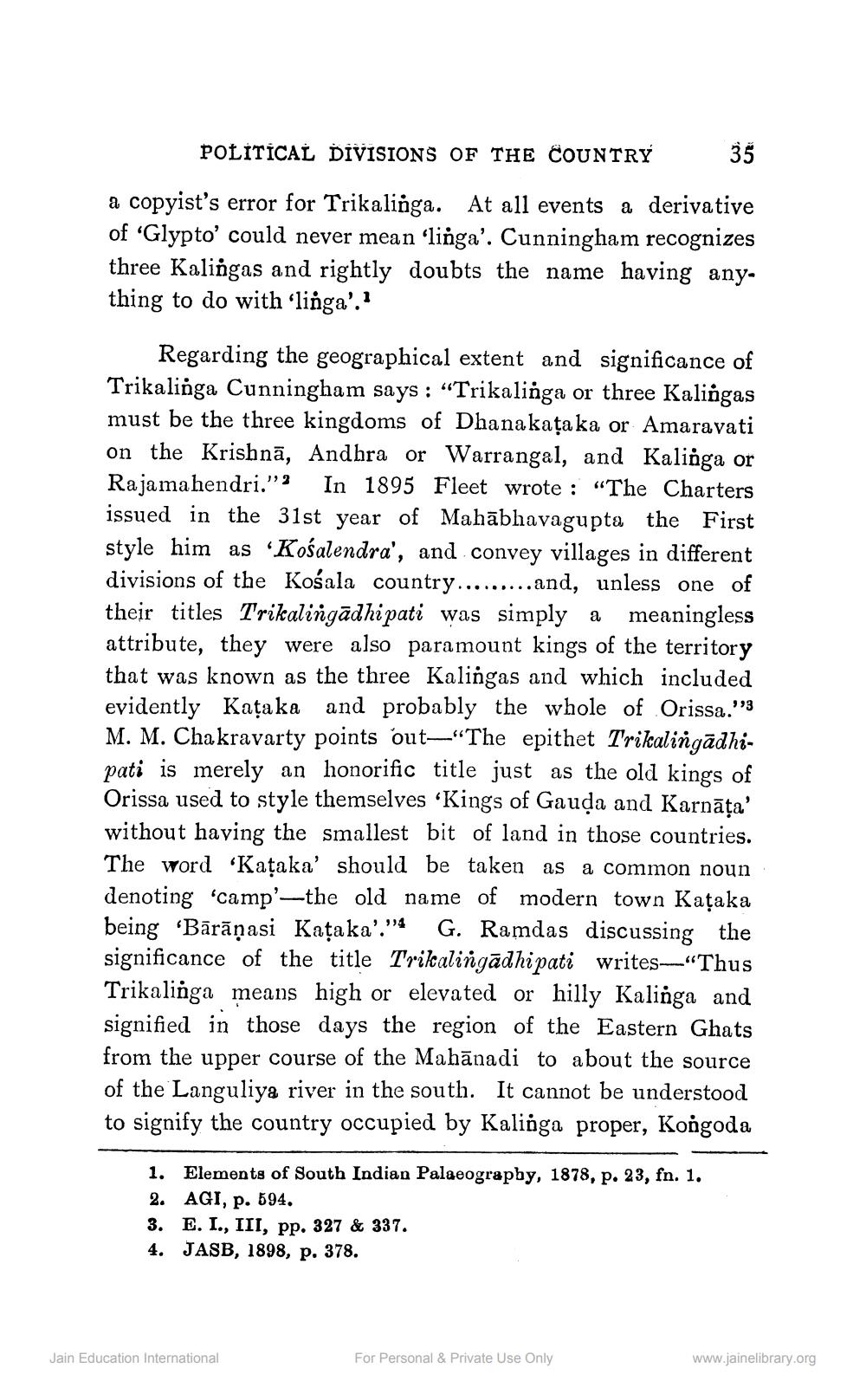________________
POLÍTICAL DIVISIONS OF THE COUNTRY 35 a copyist's error for Trikalinga. At all events a derivative of 'Glypto' could never mean 'linga”. Cunningham recognizes three Kalingas and rightly doubts the name having any. thing to do with ‘linga'.'
Regarding the geographical extent and significance of Trikalinga Cunningham says : “Trikalinga or three Kalingas must be the three kingdoms of Dhanakața ka or Amaravati on the Krishnā, Andhra or Warrangal, and Kalinga or Rajamahendri."'? In 1895 Fleet wrote : “The Charters issued in the 31st year of Mahābhavagupta the First style him as 'Kośalendra', and convey villages in different divisions of the Kośala country......... and, unless one of their titles Trikalingādhipati was simply a meaningless attribute, they were also paramount kings of the territory that was known as the three Kalingas and which included evidently Kațaka and probably the whole of Orissa.''3 M. M. Chakravarty points out—"The epithet Trikalingādhipati is merely an honorific title just as the old kings of Orissa used to style themselves ‘Kings of Gauda and Karnāța’ without having the smallest bit of land in those countries. The word 'Kațaka’ should be taken as a common noun denoting camp'-the old name of modern town Kațaka being 'Bārāṇasi Kațaka'."4 G. Ramdas discussing the significance of the title Trikalingādhipati writes--"Thus Trikalinga means high or elevated or hilly Kalinga and signified in those days the region of the Eastern Ghats from the upper course of the Mahānadi to about the source of the Languliya river in the south. It cannot be understood to signify the country occupied by Kalinga proper, Kongoda
1. Elements of South Indian Palaeography, 1878, p. 23, fn. 1. 2. AGI, p. 594. 3. E. I., III, pp. 327 & 337. 4. JASB, 1898, p. 378.
Jain Education International
For Personal & Private Use Only
www.jainelibrary.org




